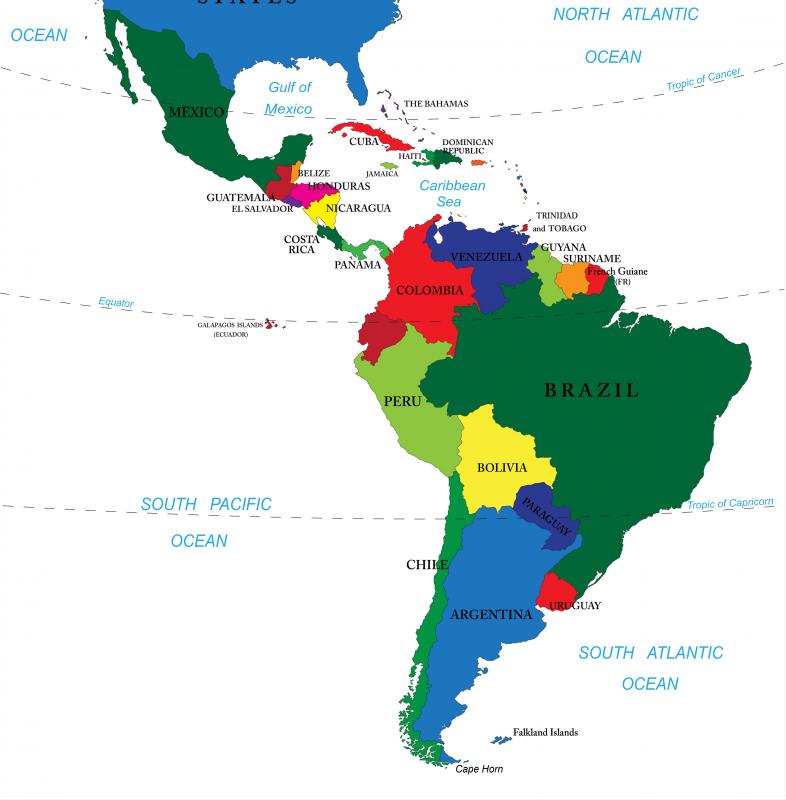At AllThingsNature, we're committed to delivering accurate, trustworthy information. Our expert-authored content is rigorously fact-checked and sourced from credible authorities. Discover how we uphold the highest standards in providing you with reliable knowledge.
What Is the Silver Teal?
Native to the southern areas of South America, the silver teal is a species of duck. Two subspecies of this duck can be found, one in the northern part of this region and one in the southern part. The silver teal has a somewhat distinctive appearance, and it can be found in shallow fresh water. They are considered dabbling ducks, and they prefer to nest on shore.
Teals are a type of dabbling duck, which means they prefer to feed on the surface of the water. They are usually distinctive from other types of ducks because of their colorful appearance. The scientific name for the silver teal is Anas versicolor. It is also sometimes referred to as the versicolor teal as well. Although the puna teal was once considered a subspecies of the silver teal, it is now recognized as a separate species, and there are now only two recognized subspecies of Anas versicolor.

Anas versicolor versicolor, commonly known as the northern silver teal, can be found in the northern part of the silver teal's range. It is common in the countries of Bolivia, Uruguay, and Paraguay. The southern silver teal, or Anas versicolor fretensis, can be found in the southernmost part of south America. It can be found in the southern parts of Argentina and Chile, as well as the Falkland Islands. The southern silver teal is typically slightly larger and darker, but these two subspecies generally have the same coloring.

The top of a male silver teal's head, above the eyes, is very dark brown or black, and its cheeks are buff colored. A small patch of light orange is visible at the top of its otherwise blue bill, and a black stripe can sometimes be seen running down the middle of the bill. Its throat and sides are buff colored with small black specks, and its breast and front sides are buff colored with more prominent speckling. The tail and rump of this bird are finely barred, and its wings are usually grayish brown. Male silver teals also iridescent blue-green secondary feathers on their wings, and two prominent white bars are usually visible.
Male silver teals also keep this coloring throughout the year, since they keep the same plumage all year round. Females can be distinguished from the males due to their slightly smaller size. They are also usually somewhat duller in color.
The silver teal usually prefers bodies of shallow freshwater, such as ponds and small lakes. Unlike some other ducks, they typically prefer to feed on the surface of the water. They rarely dive underneath the water. Instead, they prefer to skim the surface of the water with their bills, in hopes of capturing insects. They also feed on aquatic vegetation.
Silver teals usually build their nests on land. The females will lay clutches of five to ten eggs, which hatch in a little less than a month. Although it is a relatively docile species, this duck will not usually hesitate to protect its nest.
Frequently Asked Questions
What is a Silver Teal?
The Silver Teal, also known as the Versicolor Teal, is a small dabbling duck native to South America. It's recognized for its striking plumage, with a silver-gray body, speckled brown back, and a distinctive white face with a black line running from the bill to the back of the head. These birds are often found in freshwater wetlands and marshes.
What does the Silver Teal eat?
Silver Teals are omnivorous, with a diet that includes a variety of aquatic plants, seeds, and small invertebrates. They forage by dabbling on the water surface or by upending, rarely diving underwater. Their diet adapts seasonally to what is available, which helps them thrive in diverse wetland habitats.
How does the Silver Teal reproduce?
Silver Teals breed during the rainy season when water levels are high. They nest on the ground, often concealed in dense vegetation near water. The female lays 6 to 10 eggs, which she incubates for about 25 days. The precocial chicks are cared for by both parents but are able to feed themselves shortly after hatching.
Is the Silver Teal migratory?
While Silver Teals are primarily sedentary, some populations may exhibit migratory behavior depending on environmental conditions. In regions where water levels fluctuate significantly, such as in the Pampas of Argentina, these ducks may move to find suitable habitats, especially during droughts when wetlands may temporarily disappear.
What are the threats to the Silver Teal population?
The Silver Teal faces threats from habitat loss due to wetland drainage for agriculture and urban development. Additionally, water pollution and hunting can impact local populations. However, they are currently listed as Least Concern by the IUCN Red List, indicating a stable population across their range.
Can Silver Teals be found in captivity?
Yes, Silver Teals can be found in captivity, particularly in zoo collections and among waterfowl enthusiasts. They are known for being relatively hardy and adaptable to captive conditions, making them a popular choice for aviaries. Their attractive appearance and calm demeanor contribute to their popularity in managed care settings.
AS FEATURED ON:
AS FEATURED ON:












Discuss this Article
Post your comments